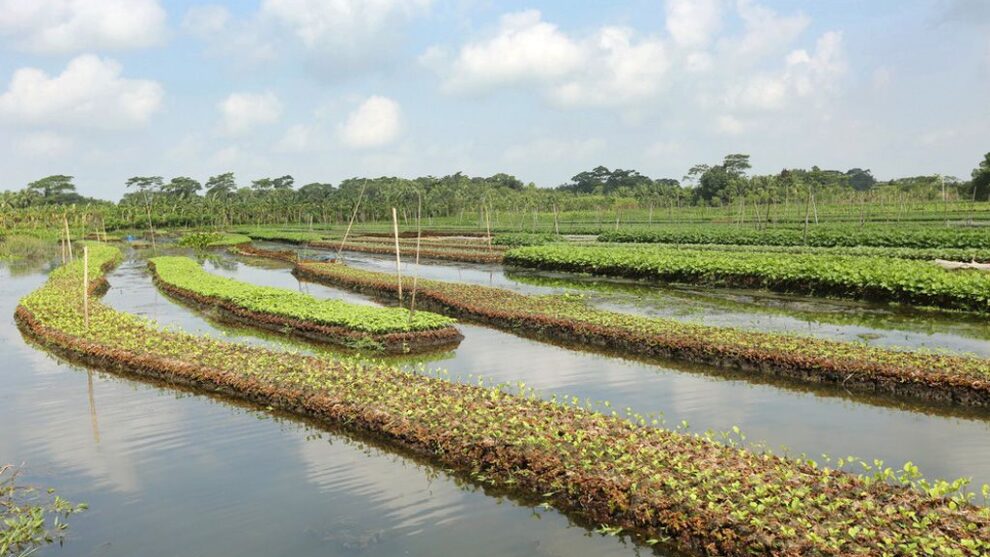Bangladesh is a riverine country with two-thirds of it being wetlands. It is prone to frequent flooding due to rainfall, and bad sewage system, with large masses of land being under water for at least half of the year. This makes cultivation of crops more difficult than it should be and yet agriculture is a great contributor to the GDP of Bangladesh even though it’s a developing nation.
With a few people shifting to other means of income, such as garments factory, many in the southern region of Bangladesh, like Barisal and Gopalgonj, are keeping traditions alive by still carrying out a centuries-old cultivation technique called dhap or baira. This is giving rise to the floating gardens, which are man-made islands.

The method isn’t only exclusive to Bangladesh, it is also carried out in Myanmar and Kashmir, but the one in Bangladesh has been considered a crucial agricultural heritage system by The United Nation’s Food and Agriculture Organization in December 2015. Now, how are these landscapes actually developed?
The farmers first beat and thump several layers of aquatic weed together into a raft-like structure. Then it is left to rot after which it is mixed with silt and cow dung. Later tema, which are small balls made of peat soil, carrying crop seeds are covered with coconut fiber. When the seedling grows up to 15cm in around a week, they are sown to the existing artificial islands. The floating beds are attached to bamboo poles to reduce the chances of them drifting away.

Typically, one is about 6m in length but some are even as long as 55m. It provides food for the family and space for poultry, and can also be a source of income, with earnings of Tk.11000 per 100 square meters during monsoon. They’re not very costly, only around Tk.8000, and don’t use any fertilizers as organic matter can already be found in the beds.
Farmers grow certain spices and vegetables, and each floating bed can last for around 6 months. After that, when water level decreases at the end of autumn, the islands are broken down and mixed with the soil to grow winter crops in.

IUCN and Care International, a humanitarian agency, reintroduced the idea of floating gardens in the haors of Bangladesh in 2005. And, Practical Action, the UK-based organization, did the same in Gaibandha in the same year. Later, in 2013, the government approved Tk.136m to promote the concept to prevent the impacts of climate change on the farmers’ lives. The project was conducted in at least 50 locations in the country with the help of 12,000 families in 8 different districts.






